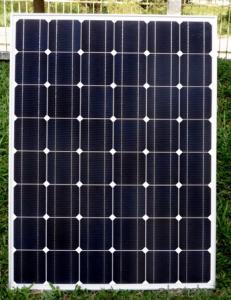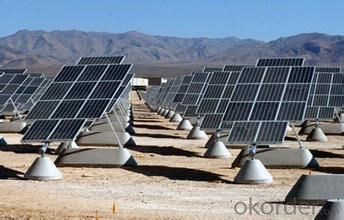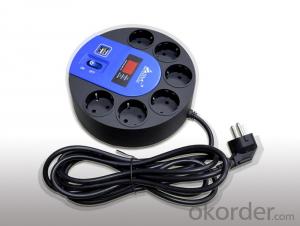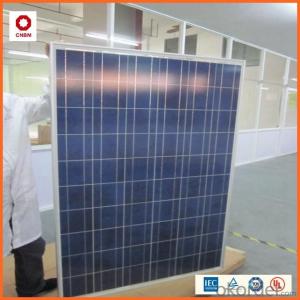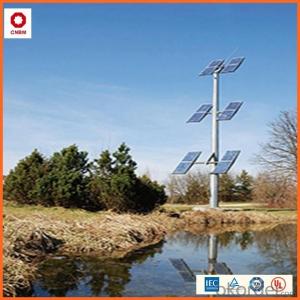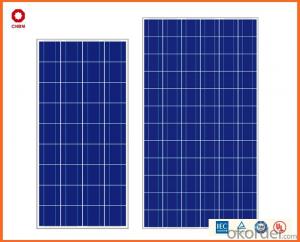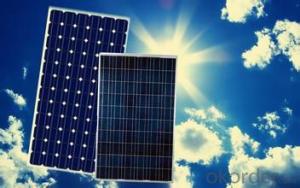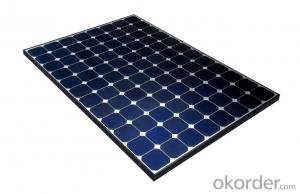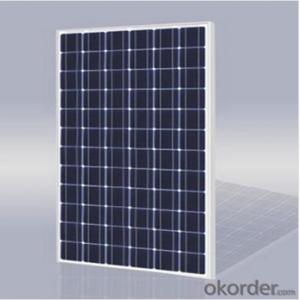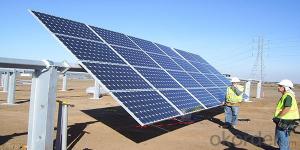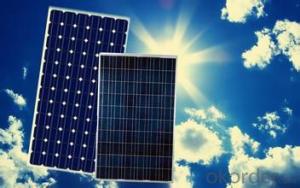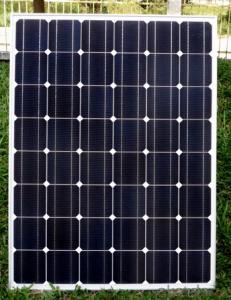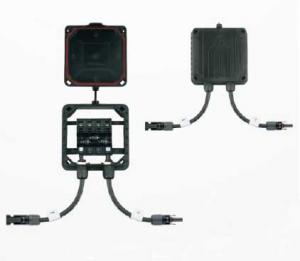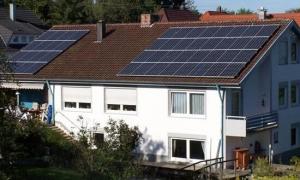Erus Solar Energy Systems 106kw CNBM Monocrystalline Silicon Panel for Home Use
- Loading Port:
- Tianjin
- Payment Terms:
- TT OR LC
- Min Order Qty:
- 45 watt
- Supply Capability:
- 1000 watt/month
OKorder Service Pledge
OKorder Financial Service
You Might Also Like
Specification
106KW CNBM Monocrystalline Silicon Panel for Home Using
Production description
Off-the-grid homes are autonomous; they do not rely on municipal water supply, sewer, natural gas, electrical power grid, or similar utility services. A true off-grid house is able to operate completely independently of all traditional public utility services. The idea has been recently popularized by certain celebrities including Ed Begley, Jr.[1] who stars in Living with Ed[2] television show on the Home & Garden Television (HGTV) network. Actress Daryl Hannahpromotes off-grid living and constructed her home in Colorado according to those principles, as does survival expert and Dual Survival co-star Cody Lundin,[3]who lives in a self-designed, passive solar earth house in the high-desert wilderness of Northern Arizona, collecting rainwater, composting waste, and paying nothing for utilities.[4][5]
This is several times larger than the total world energy consumption, which was 559.8 EJ in 2012.
Electrical power can be generated on-site with renewable energy sources such as solar (particularly with photovoltaics), wind, micro hydro, geothermal; with agenerator or Micro combined heat and power with adequate fuel reserves. Such a system is called a stand-alone power system. In addition, it is possible to simply eliminate electric power such as in Old Order Amish and Old Order Mennonite communities.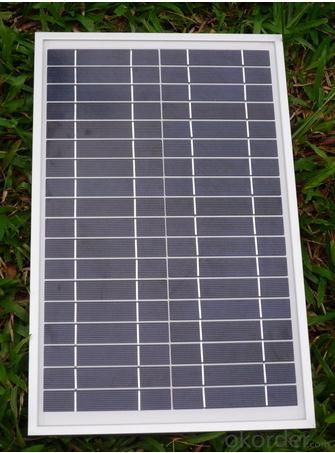
Feature
1.High conversion efficiencies resulting in superior power output performance.
2.Outstanding power output even in low light or high temperature conditions
3.Optimized design for ease of soldering and lamination
Physical characteristic
1. Rigorous quality control meets the highest international standards.
2. High-transmissivity low-iron tempered glass, strong aluminium frame.
3. Using UV-resistant silicon.
4. IS09001/14001/CE/TUV/UL
Packaging
26pcs in one carton 6pallets in 20foot container 14pallets in 40 foot container.
- Q: What is the impact of temperature fluctuations on the performance of solar panels?
- The performance of solar panels can be significantly affected by temperature fluctuations. When exposed to high temperatures, solar panels tend to become less efficient, resulting in a decrease in power output. This is mainly because the materials used in the panels, such as silicon-based photovoltaic cells, are sensitive to changes in temperature. One of the primary consequences of high temperatures is an increase in resistance within the solar panels. This higher resistance leads to a loss of electrical current flow, reducing the overall efficiency of the panels. Additionally, the semiconductor material in the panels can expand under high temperatures, potentially causing microcracks or other damage to the structure. This further diminishes the efficiency and lifespan of the panels. Conversely, extremely cold temperatures can also have a negative impact on the performance of solar panels. In cold conditions, the conductivity of the materials used in the panels decreases, resulting in higher resistive losses. Moreover, the accumulation of snow or ice on the panel surface can impede sunlight absorption, further decreasing power output. To counteract the effects of temperature fluctuations, solar panels are often equipped with thermal management systems. These systems help dissipate excess heat and maintain an optimal operating temperature range for the panels. Common techniques include the use of cooling fluids, heat sinks, or ventilation systems. By controlling the temperature, the performance and longevity of solar panels can be enhanced. It is important to note that although temperature fluctuations can impact the efficiency of solar panels, they still remain a viable and sustainable source of energy. Advances in solar technology, such as the development of more temperature-resistant materials and improved thermal management systems, continue to improve the performance and reliability of solar panels in different climate conditions.
- Q: What is the role of solar thermal collectors in solar energy systems?
- Solar thermal collectors play a crucial role in solar energy systems by harnessing the sun's heat and converting it into usable thermal energy. They absorb sunlight and convert it into heat, which can then be used for various purposes such as heating water, generating electricity, or providing space heating. These collectors are responsible for capturing and utilizing the sun's thermal energy, making them a key component in the overall efficiency and effectiveness of solar energy systems.
- Q: Can a solar energy system power an entire home or business?
- Yes, a solar energy system can indeed power an entire home or business. With the right size and capacity of solar panels, combined with an efficient battery storage system, a solar energy system can generate and store enough electricity to meet the power demands of a residential or commercial property. Additionally, advancements in solar technology and energy management systems have made it easier to optimize solar energy usage and reduce reliance on the grid, making solar power a viable and sustainable solution for powering homes and businesses.
- Q: Can solar energy systems be used for powering electric vehicle research and development centers?
- Yes, solar energy systems can be used to power electric vehicle research and development centers. Solar panels can generate electricity from sunlight, which can be used to power the facilities and provide a sustainable and renewable energy source for the centers' operations. This can greatly contribute to reducing carbon emissions and promoting green and clean energy practices in the electric vehicle industry.
- Q: Can a solar energy system withstand extreme weather conditions?
- Yes, a solar energy system can withstand extreme weather conditions. Solar panels are designed to be durable and are built to withstand a range of weather conditions, including extreme heat, cold, wind, rain, and snow. They are made with tempered glass and are often tested to ensure they can withstand hailstorms or heavy snow loads. Additionally, solar panels are typically installed securely to withstand strong winds and are designed to be resistant to corrosion. Overall, while extreme weather conditions can have some impact on solar energy production, solar energy systems are built to withstand and continue operating effectively in a variety of weather conditions.
- Q: Can a solar energy system be installed on a ground-mounted structure?
- A ground-mounted structure is capable of accommodating a solar energy system. Ground-mounted solar systems are highly sought after for residential, commercial, and utility-scale installations. These systems involve the installation of solar panels on a structure built on the ground, such as a pole, rack, or frame. Ground-mounted systems offer numerous advantages, including the flexibility to place panels in various locations, simpler maintenance and cleaning, and the ability to optimize panel angle and orientation for maximum energy production. Additionally, ground-mounted systems can be implemented in situations where rooftop installation is not possible, such as properties with limited roof space or shading issues. Consequently, the installation of a solar energy system on a ground-mounted structure presents an effective and efficient means of harnessing solar power.
- Q: Can solar energy systems be used for powering airports or transportation hubs?
- Yes, solar energy systems can certainly be used for powering airports or transportation hubs. Solar energy is a renewable and sustainable source of power that can be harnessed through the installation of solar panels. These panels absorb sunlight and convert it into electricity, which can then be used to power various operations within airports or transportation hubs. Solar energy systems can provide a consistent and reliable source of power to run lighting systems, air conditioning, heating, and ventilation systems, as well as other electrical equipment. This can significantly reduce the dependency on traditional energy sources and decrease the carbon footprint of these facilities. Moreover, airports and transportation hubs often have extensive roof areas, parking lots, and open spaces, which are ideal for the installation of solar panels. These large areas can generate a significant amount of solar power, making such facilities suitable candidates for solar energy systems. In fact, several airports and transportation hubs around the world have already implemented solar energy systems. For example, Cochin International Airport in India is the world's first fully solar-powered airport, generating more energy than it consumes. In the United States, Denver International Airport has installed a large solar panel array to power its operations. Utilizing solar energy systems in airports and transportation hubs not only reduces operating costs but also promotes environmental sustainability. It helps to mitigate greenhouse gas emissions, decrease reliance on fossil fuels, and contribute to the global transition towards clean and renewable energy sources. Overall, solar energy systems are a viable and effective solution for powering airports and transportation hubs, offering numerous benefits such as cost savings, environmental protection, and energy independence.
- Q: Can solar energy systems be used for powering electric vehicle component manufacturing plants?
- Yes, solar energy systems can be used to power electric vehicle component manufacturing plants. Solar panels can generate electricity that can be used directly or stored in batteries for later use. By utilizing solar energy, these plants can reduce their reliance on fossil fuels, lower their carbon footprint, and contribute to a more sustainable manufacturing process for electric vehicles.
- Q: Can solar energy systems be easily expanded or upgraded?
- Solar energy systems can be expanded or upgraded with ease. One of the key benefits of solar technology lies in its modular design, which allows for scalability and flexibility. If you have extra space, you can effortlessly increase the capacity of your system by adding more solar panels. Moreover, advancements in solar technology have simplified the integration of new panels into existing systems. To upgrade a solar energy system, one can replace older or less efficient components with newer and more efficient ones. For instance, higher capacity inverters or battery storage can be added for energy storage purposes. The ability to expand and upgrade solar energy systems makes them a cost-effective and sustainable solution for meeting growing energy demands over time.
- Q: Can solar energy systems be used for powering telecommunications infrastructure?
- Yes, solar energy systems can be used to power telecommunications infrastructure. Solar panels can be installed on rooftops or in open spaces to harness sunlight and convert it into electricity. This renewable energy can then be used to power communication towers, equipment, and other telecommunications infrastructure, providing a sustainable and reliable energy source. Additionally, solar energy systems can be combined with battery storage solutions to ensure uninterrupted power supply even during periods of low sunlight or at night.
Send your message to us
Erus Solar Energy Systems 106kw CNBM Monocrystalline Silicon Panel for Home Use
- Loading Port:
- Tianjin
- Payment Terms:
- TT OR LC
- Min Order Qty:
- 45 watt
- Supply Capability:
- 1000 watt/month
OKorder Service Pledge
OKorder Financial Service
Similar products
Hot products
Hot Searches
Related keywords
